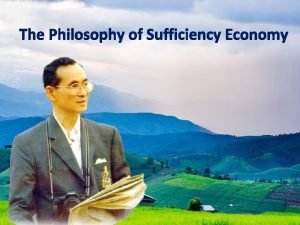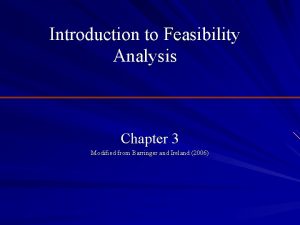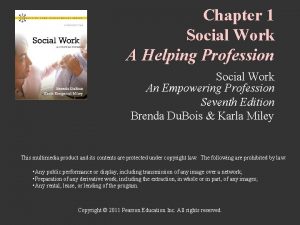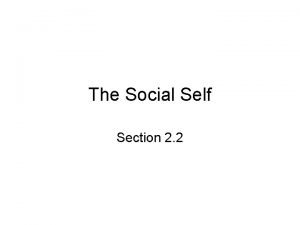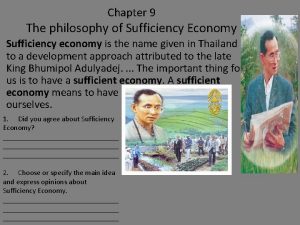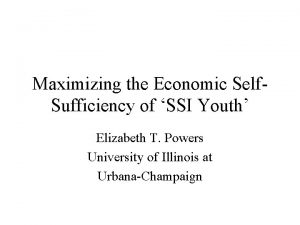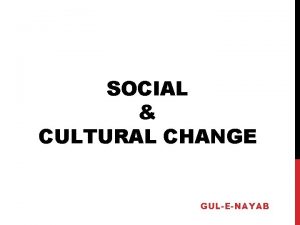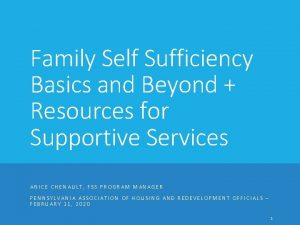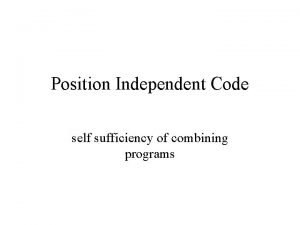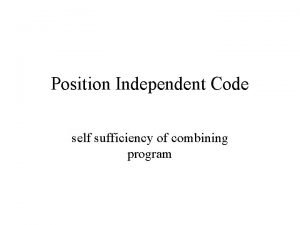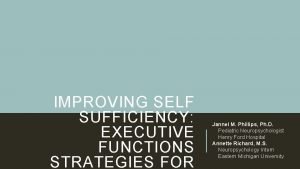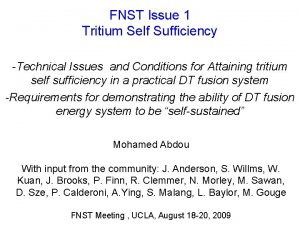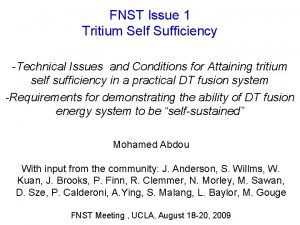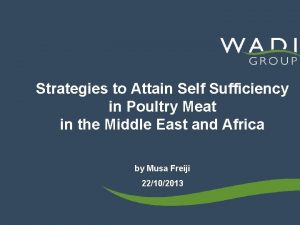Economic and Social Change Self sufficiency of the














- Slides: 14

Economic and Social Change • Self sufficiency of the manor system gave way to interest in goods from across the Old World – Largely due to the exotic goods the Europeans brought back from the Crusades (silk, spices, jewels, etc. ) • Global trade increases during the later middle ages because of the increasing desire to find a more direct route to Asia that doesn’t go through the Middle East – Increased trade/availability of money Caused new middle class – burghers – to develop • Merchants, craftspeople, and small landholders – Do not fit the defined classes under feudalism – occupy a more fluid sector of European life • Causes the nobility some stress as this new middle class is not reliant on what the nobility can provide/ensure their survival – Therein begins a slight shift in focus from living according to purely Christian ideals to focusing on economics – how best to make money/develop a strong economy

Economic and Social Change (Cont. ) • Associations of merchants - guilds – were created to regulate product quality, protect artisan interests, and support families of injured/killed workers – Each occupation has its own guild; they could grow big enough to place pressure on lords or monarchs of cities to rule in the interest of guilds (earliest forms of unions) – If a city is competing with exports from another city or region, they will often tell the monarch/lord to raise tariffs on the goods so people will buy local goods instead • Formation of guilds and alliances led to creation of the Hanseatic League – Commercial alliance between German and Scandinavian cities such as Lubeck, Hamburg, and Riga – They used their monies to fund combat merchant ships to drive away pirates from the North Sea – Monopolized goods such as timber, grain and leather – Later became wealthy enough to send ships to the Mediterranean to pick up goods from Arabian traders – reflects a desire that Europeans have for Eastern goods (Early version of the European Union today)



City Life and Gender • Medieval towns were dirty/unsanitary – People would dump human waste out the windows – fell on passerby – Horses/animals in the streets also leave waste – Raw sewage in street spawned rats and fleas – leads to disease – People relied on timber/wood to heat up homes – caused soot to stain walls and led to fires which could devour entire blocks – People began to leave the countryside to find jobs in the cities towards the later half of the Middle Ages – led to overcrowding • Men were able to move up in guilds/associations – Women became more restrained, often made to work as children until they were married off – Could sometimes become artisans/guild members, but not all had property rights – Could also get an education if they joined religious orders (education was usually reserved for the nobility – even then noble girls were more often than not illiterate


Education in Medieval Society • Learning was left in the hands of the church and its clergy – Education was faith based, so scientific innovation (the working of the human body, etc. ) was limited (practices were deemed unholy by the church – Bible is ultimate authority – why look elsewhere? – Regardless, scribes and priests of monasteries were responsible for translating and preserving manuscripts from the Greeks/Romans • Church helped Establish universities such as Cambridge and Oxford – Students could study theology, philosophy and liberal arts – Medical advancements were slow-going because of the Catholic Church – Knowledge of more advanced medical procedures often came from the Arabic world/India • Avicenna (Ibn Sina) (980 – 1037 A. D. )– Persian physician Wrote the Canon of Medicine – variety of diseases and treatments – Reference book for students and doctors for over 600 years

The Bubonic Plague Strikes • 1300 s – Bubonic Plague hit Europe— huge boils, black spots, and fever –Began in Asia - Spreads to Europe via trade • About one-third of Europe’s population dies in the epidemic – over 25 million people die in Europe alone, 90 million die throughout the old world (almost a third of the Old World’s population at the time) • Some serfs leave manors for paying work – sometimes entire villages and manors would be wiped out by the plague – there would be white crosses outside the village to show that nobody alive was in there and for people to move on • Many Jews blamed and killed (believed to have poisoned the water, etc) Church suffers weakened stature because sacraments cannot heal the infected


Italy: Birthplace of The Renaissance • The Renaissance (1300 -1600 A. D. )—Revival of culture - began in Italy – In the 1300 s, the Bubonic Plague killed at least a third of the European population – disrupts the European economy – Years after the Bubonic Plague swept through Europe, the population began to slowly increase again and people once again started to move into the cities – Growth of people and cities encouraged the growth of markets and business • The Crusades encouraged trade – Led to the growth of the city states in Italy – The Crusaders often left to the Holy Land through Italy, so they brought goods back with them in Italy as well (Kingdom of Heaven – Messina) – Tales and Records of rich cities drive more crusaders to search for these riches first before fighting for Christendom – The Italians capitalized on their location in the Mediterranean and began a monopoly on trade with the Middle East/Asia


Classical and Worldly Values • The Growth of trade let people own things they couldn’t before –People had more access to luxuries like Fine wine, food, better quality clothes – Italy has a monopoly on the trade of such items – helps encourage other European nations to look for other ways to trade with the middle east – Expansion of trade also requires innovation in technology • The focus on innovation helps shift the focus of life from the spiritual to the secular – worldly – How can we make more money/get this to work better/improve ______? • Humanism—Movement focused on human potential – less on faith (directly) – shift of focus from the sacred to the secular – Humanists studied classical texts, history, literature, philosophy – Humanists were still Christian but promoted the beauty and positive attributes of humans in art, literature, etc.

The Renaissance Revolutionizes Art • Renaissance Art Has: – Realism - Proportionate human anatomy – Natural environments – Perspective—Technique that shows three dimensions on a canvas • Realistic portraits of prominent citizens are very popular – it’s a sign of wealth and prestige to be able to order portraits especially from popular artists • Sculptures in particular shows natural postures and expressions – try to capture life in motion basically • The biblical David, Mary and Jesus are popular subjects among sculptors

 Brandt line ap human geography definition
Brandt line ap human geography definition Sphere of self sufficiency
Sphere of self sufficiency Spheres of kinesiology
Spheres of kinesiology Lifeworks self sufficiency matrix
Lifeworks self sufficiency matrix My actual self examples
My actual self examples Sufficiency economy
Sufficiency economy Oklahoma rsa screeners
Oklahoma rsa screeners Resource sufficiency feasibility analysis
Resource sufficiency feasibility analysis Prof. meier and baldwin
Prof. meier and baldwin Social change in social work
Social change in social work Economic growth vs economic development
Economic growth vs economic development Economics unit 1 lesson 2 difficult choices
Economics unit 1 lesson 2 difficult choices Social thinking adalah
Social thinking adalah Social thinking social influence social relations
Social thinking social influence social relations I self and me self difference
I self and me self difference





